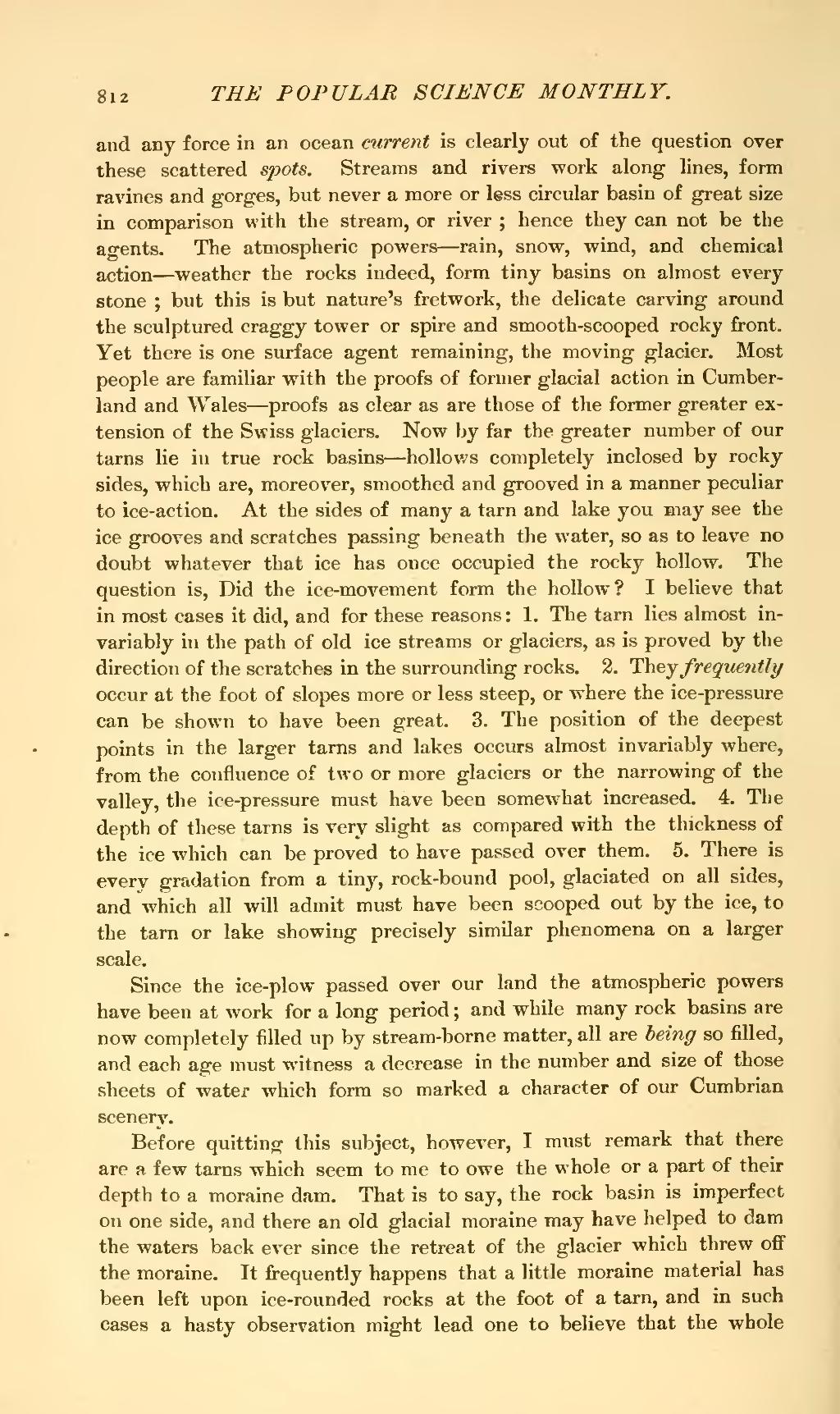and any force in an ocean current is clearly out of the question over these scattered spots. Streams and rivers work along lines, form ravines and gorges, but never a more or less circular basin of great size in comparison with the stream, or river; hence they can not be the agents. The atmospheric powers—rain, snow, wind, and chemical action—weather the rocks indeed, form tiny basins on almost every stone; but this is but nature's fretwork, the delicate carving around the sculptured craggy tower or spire and smooth-scooped rocky front. Yet there is one surface agent remaining, the moving glacier. Most people are familiar with the proofs of former glacial action in Cumberland and Wales—proofs as clear as are those of the former greater extension of the Swiss glaciers. Now by far the greater number of our tarns lie in true rock basins—hollows completely inclosed by rocky sides, which are, moreover, smoothed and grooved in a manner peculiar to ice-action. At the sides of many a tarn and lake you may see the ice grooves and scratches passing beneath the water, so as to leave no doubt whatever that ice has once occupied the rocky hollow. The question is. Did the ice-movement form the hollow? I believe that in most cases it did, and for these reasons: 1. The tarn lies almost invariably in the path of old ice streams or glaciers, as is proved by the direction of the scratches in the surrounding rocks. 2. They frequently occur at the foot of slopes more or less steep, or where the ice-pressure can be shown to have been great. 3. The position of the deepest points in the larger tarns and lakes occurs almost invariably where, from the confluence of two or more glaciers or the narrowing of the valley, the ice-pressure must have been somewhat increased. 4. The depth of these tarns is very slight as compared with the thickness of the ice which can be proved to have passed over them. 5. There is every gradation from a tiny, rock-bound pool, glaciated on all sides, and which all will admit must have been scooped out by the ice, to the tarn or lake showing precisely similar phenomena on a larger scale.
Since the ice-plow passed over our land the atmospheric powers have been at work for a long period; and while many rock basins are now completely filled up by stream-borne matter, all are being so filled, and each age must witness a decrease in the number and size of those sheets of water which form so marked a character of our Cumbrian scenery.
Before quitting this subject, however, I must remark that there are a few tarns which seem to me to owe the whole or a part of their depth to a moraine dam. That is to say, the rock basin is imperfect on one side, and there an old glacial moraine may have helped to dam the waters back ever since the retreat of the glacier which threw off the moraine. It frequently happens that a little moraine material has been left upon ice-rounded rocks at the foot of a tarn, and in such cases a hasty observation might lead one to believe that the whole
